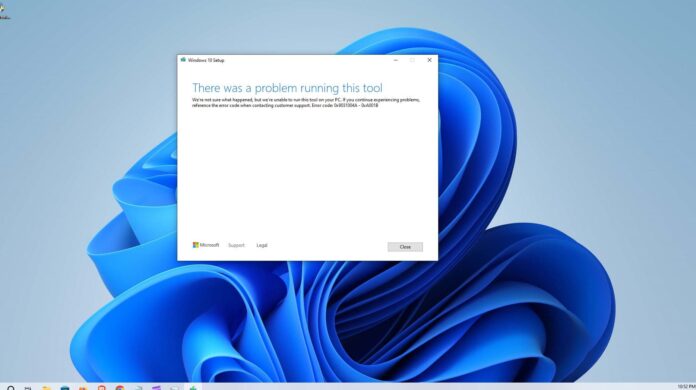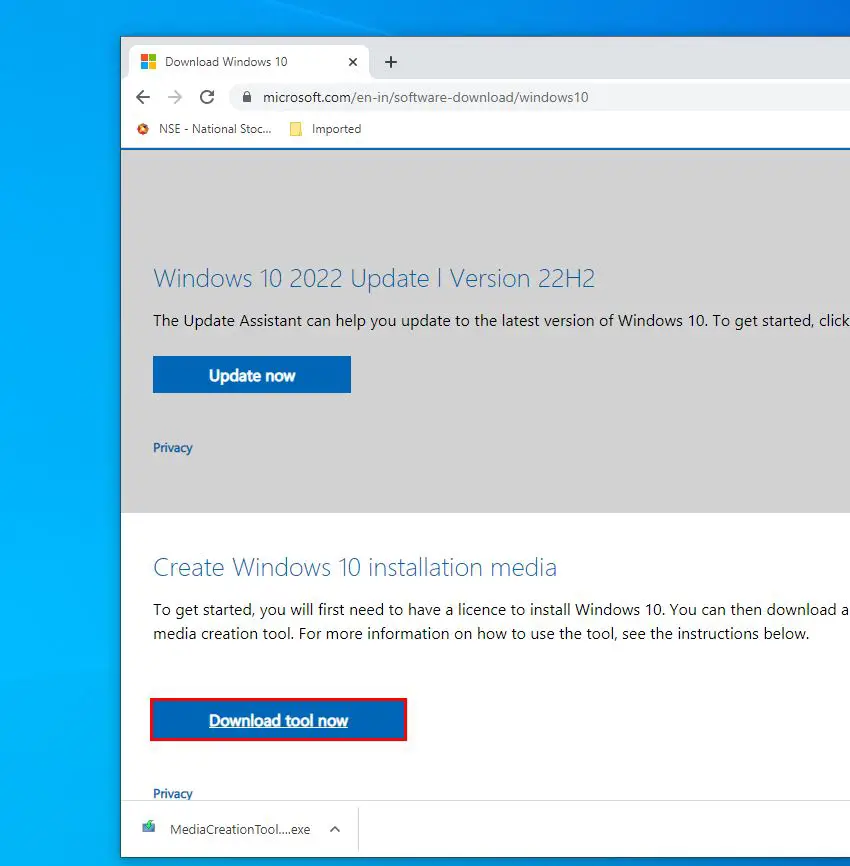The Windows Media Creation Tool is the official utility from Microsoft allows create Windows installation media (Bootable USB drive) or Download Windows ISO images. This tool is also useful to upgrade current Windows installation to a newer version, if available. However, at times, you may find “Windows media creation tool not working” display error “There was a problem running this tool”. Insufficient permissions, Interference from antivirus, Windows update service not running, slow internet, or Insufficient storage space are common reasons why you are getting Media Creation Tool Error 0x8007043C. Most of the time run the tool with administrative privileges and restart the Windows update service fix the problem and get the Media Creation Tool up and running like before.
Windows 10 Media Creation Tool Not Working
There are several possible reasons why the Windows media creation tool not working on your PC. Such as network connection problems, If the connection is intermittent or too slow, it can lead to download failures or incomplete installations.
Sometimes, security software such as antivirus programs or firewalls may interfere with the operation of the Media Creation Tool.
The tool requires enough free space on your computer to download and store the Windows installation files. If your disk space is low, the tool may fail to create the installation media.
If your user account control (UAC) settings are too restrictive, they may prevent the Media Creation Tool from making necessary system changes.
Again If the downloaded files are corrupted or incomplete, the tool may not function correctly. This can happen due to interruptions during the download process or issues with the source servers.
- Before troubleshooting, ensure a stable internet connection with sufficient bandwidth to download Windows files from Microsoft server.
- Also, check and ensure enough amount of free storage space on your hard drive or USB drive.
Run Windows Media Creation tool as administrator
Sometimes Lack of required privilege are common reason why you are getting error code 0x80072f8f – 0x20000 while using the media creation tool. And running the Windows Media Creation Tool as an administrator worked for most users to fix the problem.
First, download the latest Media creation tool from the official site: For Windows 10, for Windows 11.
- Now open File Explorer and navigate to the download folder, Right-click on the Mediacreationtool.exe file and select Run as administrator.
- Click Yes when prompted by UAC. Wait for the tool to launch and check for any improvements.
Disable Antivirus/Firewall
Security software can sometimes interfere with the operation of the Media Creation Tool. Temporarily disable your antivirus and firewall before running the tool. However, make sure to enable them again after you finish your task, as they are important for your system’s security.
- To disable antivirus software, look for its icon in the system tray (usually located in the bottom-right corner of the screen), right-click on it, and select an option like “Disable” or “Turn Off Protection.”
- For firewall software, you can typically find settings to disable it in the security or firewall section of your antivirus program.
Enable Required Services
Some services, such as Windows Update, are essential for the proper functioning of the Windows Media Creation Tool. If these services are disabled or not running, it can cause the tool to malfunction.
- Press Win + R on your keyboard to open the Run dialog box. Type “services.msc” and press Enter to open the Services management console.
- Scroll down to find the “Windows Update” service. If the service running, right-click on it and select restart.
- Well if Windows update service not started, Double-click on it to open its properties.
- Here ensure that the “Startup type” is set to “Automatic” and that the service status is set to “Running.” If the service is not running, click the “Start” button to start it.
- Click “Apply” and then “OK” to save the changes.
Similarly, check other related services such as “Background Intelligent Transfer Service (BITS)” and “Cryptographic Services” to ensure they are also set to “Automatic” startup type and are running.
After enabling the required services, restart your computer and try running the Windows Media Creation Tool again to see if the issue has been resolved.
Clear Temporary Files
Sometimes lack of storage space, Temporary files or corrupted cache may interfere with the operation of the Windows Media Creation Tool. Use the built-in Disk Cleanup utility to remove temporary files and system cache. Again if you are upgrading existing Windows installation using the media creation tool ensure enough free space on system drive (C drive) to complete it without any problems.
- To access Disk Cleanup, type “Disk Cleanup” in the Windows search bar and select the corresponding result.
- Follow the prompts to select the drive you want to clean up (usually the C: drive) and choose the types of files you want to delete.
- Be sure to select “Temporary files” and any other relevant options before clicking “OK” to start the cleanup process.
In addition, try move large size files and folders to external storage to free up space on the system drive.
Tweak Windows registry (Used suggested)
If the Media creation tool not working or displays error while upgrade Windows following registry tweak help a few users fix it.
- Press Windows key + R, type regedit and click on ok to open the registry editor,
- Navigate to HKEY_LOCAL_MACHINE\SOFTWARE\Microsoft\Windows\Current Version\WindowsUpdate\OSUpgrade
- Right-click on the OSUpgrade key and select the New > DWORD (32-bit) Value option Name this value as AllowOSUpgrade
- Double-click on AllowOSUpgrade and under Value data, type 1. Click OK, close the Registry Editor and reboot your PC.
- Check if you can use the Media Creation Tool now.
 Update Windows
Update Windows
Again Outdated system files or missing updates can sometimes cause compatibility issues with the Windows Media Creation Tool. Ensure that your Windows operating system is up to date by checking for and installing any available updates through the Windows Update feature.
Press the Windows key + I to open Settings > Update & Security > Windows Update.
Click on “Check for updates” and allow Windows to scan for and download any available updates.
Once done, restart your computer to apply changes, and try run the Media creation tool.
Use an Alternative Download Method
If the Windows Media Creation Tool continues to encounter issues, consider using alternative methods to download Windows installation files. Instead of using the Media Creation Tool, you can download Windows ISO file directly from the Microsoft website using a web browser.
Then you can use third-party software like Rufus to create a bootable USB drive or burn the ISO file to a DVD for installation purposes. Rufus is a lightweight utility that is commonly used for creating bootable USB drives from ISO images and is available for free download online.
Also read:






 Update Windows
Update Windows